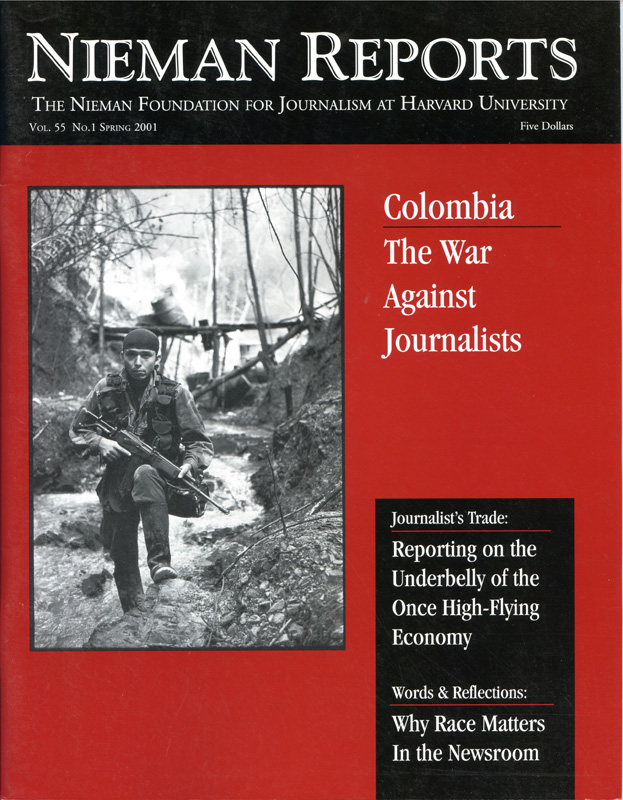ISSUE
Spring 2001

Colombia: The War Against Journalists
Reporting on Colombia’s war is extremely dangerous for journalists. For what they publish and broadcast, reporters are threatened and harassed, kidnapped and beaten, driven into exile and murdered. Only in Algeria have more journalists been murdered during recent years in retaliation for the work they do.
Articles
International Journalism
Violence Against Journalists in Colombia
Impunity surrounds these crimes.
March 15, 2001
International Journalism
Truth in the Crossfire
In a brutal attack, ‘my truth…was dealt a mortal wound.’
March 15, 2001